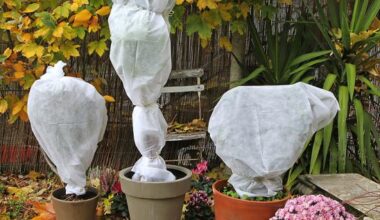Fertilization with plant food allows the plant to assimilate the dose directly. In the long term, plant foods support the growth of the crop throughout its development period. But more precisely, plant food allows to compensate a specific lack of the plant.
Contents
What is plant food?
Plants make their own food by using light in a process called photosynthesis. Fertilizer is more like a vitamin that you take from time to time to improve your health (it is essentially a mixture of minerals).
The minerals in the soil are released each time your green plants are watered. Your plants then absorb all these nutrients for a better result. Excess minerals from fertilizers will not be used by your plant and can even damage it.
How are plant foods used?
They are used in two different ways:
By watering the soil: directly into the soil.
By foliar fertilization: sprayed on the foliage of plants.
In the case of watering the soil, the contribution is direct and uniform but it is necessary to take care to make it on a always wet ground.
For foliar administration, the effect is very fast. The nutrients are immediately captured by the leaves of the plants. It is a direct short-term action that acts as a supplemental fertilization technique. Foliar administration is for example very effective in case of severe weather conditions or for a particular deficiency.
We advise you to apply it early in the morning or in the evening because the temperature is cooler and wetter so the plant food penetrates the foliage better.
What do plants need?
Plants will absorb macro-nutrients, i.e. NPK (N = nitrogen, P = phosphorus and K = potassium) which is the main base of fertilizers for land plants. Ex: a fertilizer for citrus fruits contains very often a NPK 14.4.28 that is to say: 140 grams of nitrogen for 1 kg, 40 grams of phosphorus for 1 kilo and 280 grams of potassium for 1 kg.
They will also consume important quantities of iron and trace elements (calcium, boron, magnesium, manganese etc.). We will distinguish two different situations according to the ratio between the nitrogen and phosphorus released by the animal metabolism (in the form of nitrate and phosphate) and the nitrogen and phosphorus consumed by the plants.
In low to medium light aquariums, algae will compete with plants if the concentration of macro-nutrients (nitrogen and phosphorus) is too high. Indeed, the plants will not consume everything.
In brightly lit aquariums, algae will compete with plants if the concentration of macro-nutrients is too low, as suffering plants will eventually leave behind nutrients that the algae will use to grow.
This means that the addition of macro-nutrients via specialized fertilizers paradoxically favors the plants at the expense of the algae
Spreading the plant food
Once the seedling is out of the ground or when repotting, add a quick release fertilizer to encourage rooting and boost growth. To protect your hands, put on gloves before handling your fertilizer.
- If you have chosen a solid plant food, you will have to apply it next to the plant. Be careful not to place it directly on the plant, as it could burn the stem or the first leaves. Use a glove and apply the plant food in small quantities. Then water, the plant food will naturally penetrate the soil.
- For plant food, refer to the proportions indicated on the package. Mix the product with water in a can with a spout before watering the plant. Some products are already diluted and sold in a suitable container.
Summary
As long as you use plant food properly, it’s a very simple and inexpensive way to get the most out of your plants. There are many fertilizer options available, which means you can be as picky as you want, choosing a fertilizer and feeding program that is perfect for you and your plants.
Specialty mixed plant foods can be purchased by dedicated houseplant growers who know in depth what their houseplants need, while casual houseplant owners can simplify things by selecting a versatile houseplant fertilizer to improve the health of their plants without complicating things.
Gardeners who like to spend time maintaining their plants may like to opt for a plant food that they can have complete control over, while gardeners who prefer a less demanding houseplant care program can choose the much less labor-intensive option of slow release.
Given the ease of use of plant foods and the effects they have on houseplants, there is no reason not to use them. For all your houseplants such as Carnivorous, Azalea, Succulents, Ficus, Geraniums, Succulents, Perennials, Cactus, Bonsai, Flowering plants, Green plants, Seedlings, Roses, Vegetable garden, Shrubs etc … in all cases favor green fertilizers 100% Natural.








